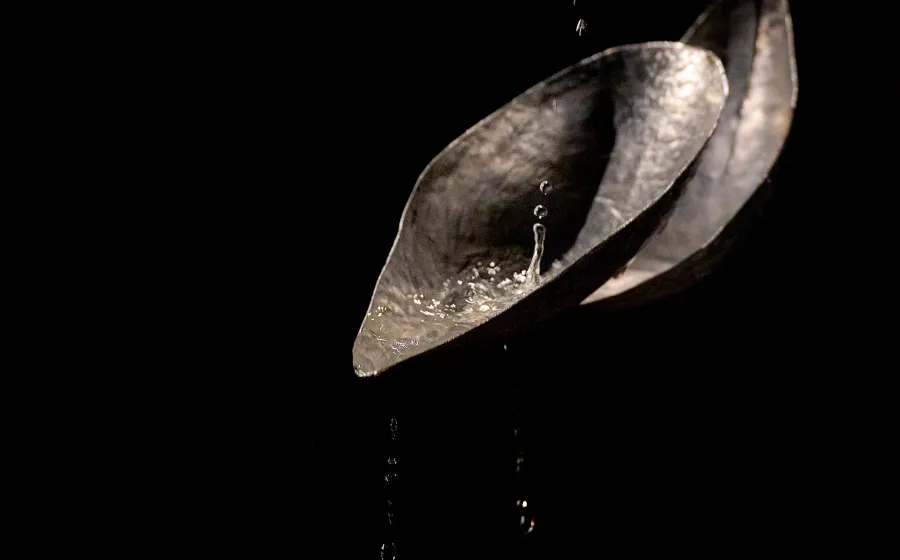Cristina Mejías. Lengua en coro, cuenta (Tongue in Choir, Tell)
Accesibilidad
Reduced mobility
Date
Venue
Price
Free admission until full capacity
Category
Format
Institution
Cristina Mejías’ (Jerez de la Frontera, 1986) work remains attentive to oral tradition, listening and storytelling, and she uses sculpture, installation art and video as her primary working tools. Mejías has a degree in Fine Arts from Madrid and Dublin’s NCAD. She developed part of her artistic practice in Berlin before returning to Madrid, where she currently lives and works. She has recently held solo shows at institutions such as C3A (Cordoba), Museo Patio Herreriano (Valladolid), RoyalMount (Montreal, Canada), Centro Párraga (Murcia), Teatro La Capilla alongside Víctor Colmenero Mir (CDMX, Mexico), the Museo de Cádiz, Blueproject Foundation (Barcelona) and the Museo Arte Contemporáneo del Zulia (Maracaibo, Venezuela), among others. Her works will be soon on display at La Panera (Lérida).
She has received various awards, residencies and grants, including: ARCOmadrid’s Illy Award, the 9th International Obra Abierto Visual Art Award (joint winner), the 2023 ARCO Foundation Award, the Community of Madrid ARCO Award, the Generación 2020 Award, and art residencies at Hermes Artes Visuais (Sâo Paulo, Brasil), ArtWorks (Porto, Portugal) in collaboration with Matadero’s CRA, Tabakalera (San Sebastián) and MACZUL (Maracaibo, Venezuela).
Lengua en coro, cuenta (Tongue in Choir, Tell)
This installation by Cristina Mejías was conceived in dialogue with the place where it is presented: the old cold storage room of Madrid’s Municipal abattoir. The space is crossed lengthwise by what were once the drainage channels of the municipal facility. Based on these and the desire to recover this disused, covered and forgotten element, Cristina invites us to enter this installation in which water becomes a sensitive material that flows through a mesh of sculptural gestures that feed stories and construct narratives.
There is something magical and fascinating, almost hypnotic, about observing the flow of water: The sound transports us to the Arab gardens so prevalent in Andalusian architecture. At the same time, it reminds us of nature and the fragile balance that sustains it, and of those legends that shape us and have been passed down from generation to generation. This installation delves into Mejías’ desire to understand the materiality of knowledge-building, to grasp the functioning of transmission, and to comprehend that each element is transformed in contact with the other, adding layers of meaning, and that it is precisely in this evolution where its richness lies.
Lengua en coro, cuenta is part of a series of projects that Cristina Mejías began in 2021 during a residency at Pico do Refúgio in the Azores, which resulted in a site-specific installation: Knot the Tongue, Grasp a Stream, in which water flowed through a forest via various sculptural elements: an ephemeral mechanism tied to natural elements, impossible to control and distinguished by a poetic fragility.
Learning is based on experience, and it was precisely that first experience in the Azores—along with two of her more recent projects, Aprendices errantes (Wandering Apprentices, Museo Patio Herreriano, Valladolid, 2023) and Saber de oído (Knowing by Ear, C3A, Córdoba, 2025)—which led Cristina to this new chapter in her work. Lengua en coro, cuenta (Tongue in Choir, Tell) is a fragile, changing ecosystem where there are no hierarchies or ranks, as every one of its pieces depends on another, giving rise to a web of balances in which gravity is the driving force. In this imagined landscape, forms, like words, are polysemic, and the visible and invisible are part of the narrative. An invitation for us to use these sculptural gestures to createour own interpretations and embody an experience in which hands guide and caress us, becoming both container and content, seeing the positive and finding the negative. Water overflows, light is filtered, the reflection appears on the architecture, and the space also feeds the narrative.
The water filters through, and upon doing so it transforms the landscape. The sculptural elements which construct this narrative are mainly produced from recycled materials, objects from other projects by both the artist and by others which have been modified and adapted for this new purpose, accumulating marks, lines and stories, and making the abandoned useful. This human trace is also present in the new productions: handcrafted ceramic and metal pieces which refers to the transmission of traditional knowledge, which requires a long, unhurried time and that dwells in imperfection, babbling, the stumbling of those bodies that learn to speak, walk, flow, and construct language and movement. In this knowledge also lies that of the canal-keeper who reads the terrain of his mountains and seeds the water of the gorges, , caring for the landscape.
The water flows, branching through a creature with two mouths, becoming voice and transmuting the space into a choral composition through which we open ourselves to the multiple possibilities and forms that things take. These creatures which accompany us, half-human, half-magical, formless organisms brought to life by our imagination, perhaps hold those voices, that knowledge which has flowed over time. In this polyphonic fable of changing rhythm, there is no beginning and no end: we walk through a knot of present moments, in search of a denouement which never comes. What remains of that first story?
Artistic team and specifications
Curator: Soledad Gutiérrez
Production and setup: ArtWorks
Design of supporting water system: Rodrigo Aroso
Advice and support: Juan Mejías Gómez
Ceramic pieces with Raquel Eidem
Lighting design: Víctor Colmenero Mir
Images: Audiovisual equipment by ArtWorks (Bruno Lança, Bernardo Bordalo and Pedro Soares)


